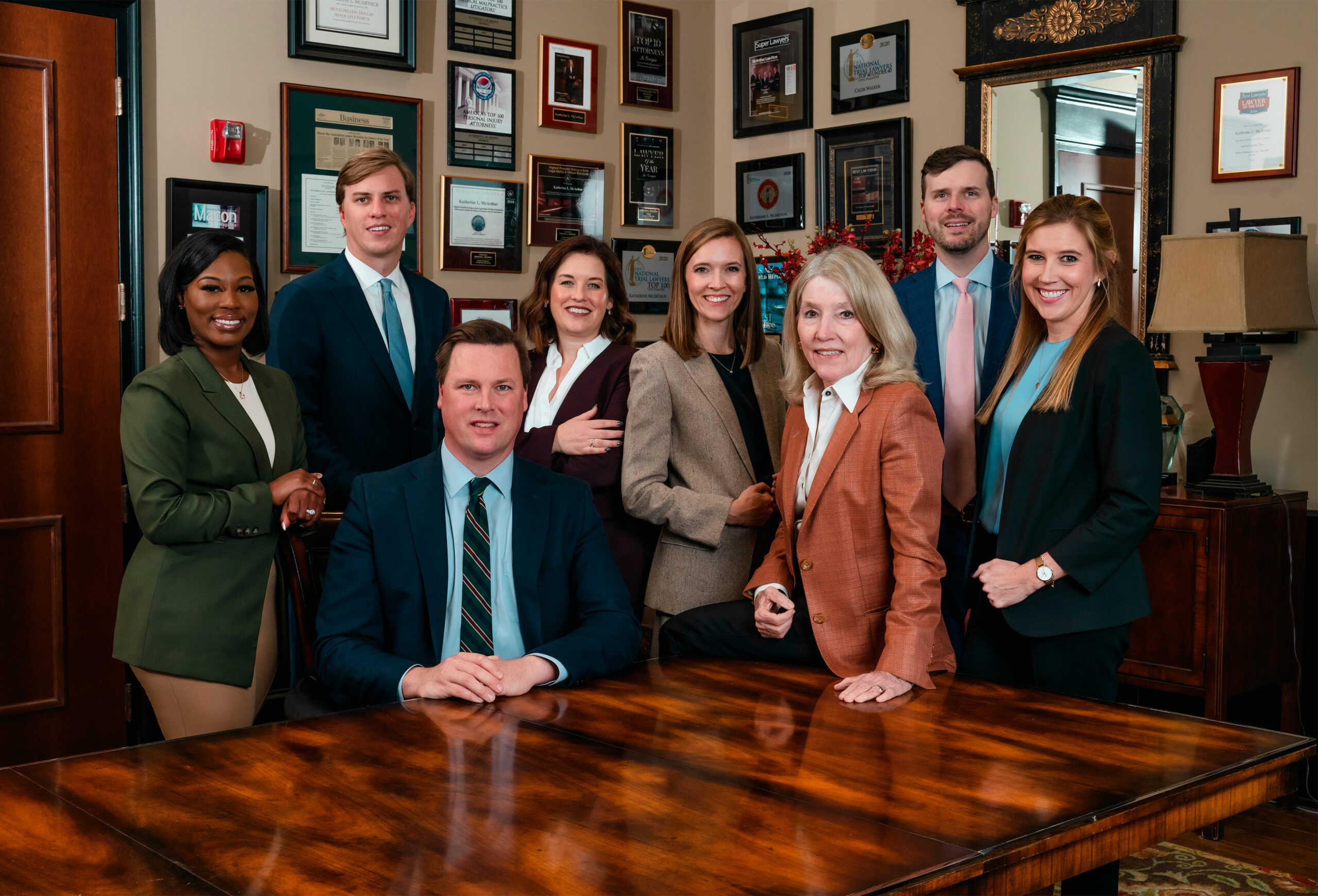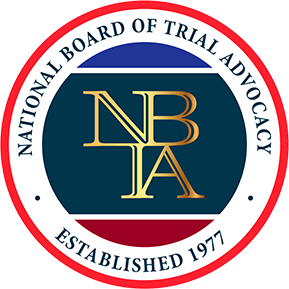Delivery drivers are everywhere in Georgia, from busy Atlanta streets to suburban neighborhoods in Macon and Warner Robins. As more people rely on fast delivery from companies like Amazon, UPS, DoorDash, and FedEx, accidents involving delivery drivers are happening more often. These crashes can be serious, especially when they involve large delivery vans or rushed drivers trying to meet strict deadlines.
Georgia Delivery Driver Accident Lawyer
The team at McArthur Law Firm has worked on complex accident cases across the state and knows how to fight for compensation. Delivery driver accidents can more complicated than other car accident cases because of the way insurance works for delivery and rideshare companies.
McArthur Law Firm serves Fulton County, Bibb County and Fulton County, as well as Clayton County, Cherokee County, Forsyth County, and other counties in Georgia. For more information about the McArthur Law Firm or to set up a free consultation to learn what we may be able to do to help you with your personal injury case, give us a call at one of our offices in Georgia or fill out our online contact form.
- Atlanta Office: 404-565-1621
- Macon Office: 478-238-6600
- Warner Robins: (478) 551-9901
Overview of Delivery Driver Accident Cases
- Common Types of Delivery Drivers
- Types Of Delivery Driver Accidents
- Injuries From Delivery Driver Accidents
- Who Can Be Held Responsible For a Delivery Driver Accident
- Common Questions After a Georgia Delivery Driver Accident
- Additional Resources
Common Types of Delivery Drivers
Package Delivery Drivers
Package delivery drivers are responsible for transporting parcels and packages to residential and commercial locations. These drivers typically follow set delivery routes and schedules. They may load and unload boxes, obtain delivery confirmations, and deal with traffic, weather, and time constraints.
- UPS (United Parcel Service): UPS hires drivers as full-time or part-time employees. They drive company-owned trucks and receive full employee benefits. UPS drivers are often unionized under the Teamsters Union.
- FedEx: FedEx Ground drivers are usually employed by third-party contractors, while FedEx Express drivers are company employees. The employment arrangement depends on the division of the company.
- Amazon: Amazon uses a mix of methods. Its Amazon Flex program hires drivers as independent contractors who use their own vehicles. Amazon also contracts with Delivery Service Partners (DSPs), small third-party companies that hire their own delivery employees to fulfill Amazon orders.
These drivers usually handle a high volume of packages per shift and may be required to meet strict delivery timeframes using scanning devices and tracking software.
Food Delivery Drivers
Food delivery drivers transport meals from restaurants to customers. This segment has grown rapidly with the rise of app-based ordering. Drivers are typically paid per delivery and may also receive tips.
- DoorDash: DoorDash classifies its drivers—called “Dashers”—as independent contractors. Dashers use personal vehicles, bikes, or scooters to pick up and deliver food ordered through the app.
- Uber Eats: Like DoorDash, Uber Eats drivers are independent contractors. They often also drive for Uber rideshare services and can switch between food and passenger transport within the same app.
- Grubhub: Grubhub also relies on independent contractors who use their own vehicles. Some areas may also offer the option of bike delivery.
- Direct restaurant employment: In some cases, restaurants may employ their own delivery drivers. These drivers are typically considered employees and use either a company vehicle or their own, depending on the business.
Food delivery drivers often work flexible hours and may face challenges such as finding parking, meeting estimated delivery times, and safely handling hot or cold food during transit.
Grocery Delivery Drivers
Grocery delivery services have expanded rapidly in recent years, especially during the COVID-19 pandemic. These drivers either pick up pre-packed groceries or do the shopping themselves before delivering the items.
- Instacart: Instacart hires both in-store shoppers and full-service shoppers. Full-service shoppers are independent contractors who shop for and deliver groceries to customers using their own vehicles.
- Shipt: Owned by Target, Shipt follows a similar model. Drivers are independent contractors responsible for shopping and delivering orders.
- Walmart: Walmart uses a combination of its own employees and third-party services like Spark Delivery, where drivers are independent contractors. Walmart employees may deliver groceries as part of in-store roles.
These drivers may need to navigate store aisles, communicate with customers about substitutions, and transport large or heavy items. Time-sensitive deliveries and order accuracy are important parts of the job.
Courier and Specialized Delivery Drivers
Courier drivers typically deliver items such as documents, small packages, medical supplies, or legal paperwork. These deliveries are often time-sensitive and may require more care or documentation.
- DHL: DHL Express handles international and domestic deliveries, often in the business and logistics sectors. Its drivers are generally employees who operate company vehicles.
- Medical couriers: Medical courier companies deliver lab specimens, medications, medical devices, and supplies to hospitals and labs. These drivers may need to follow specific handling protocols and confidentiality rules.
- Legal couriers: Legal document delivery drivers serve law firms and courts, often with urgent delivery deadlines. Accuracy and chain-of-custody may be required.
Courier drivers may work in urban areas with high delivery density and are often required to meet strict service level agreements.
Employment Status: Employees vs. Independent Contractors
A key difference across delivery driver types is employment classification:
- Employees: Typically receive benefits, regular wages, and employer-provided equipment. They are covered by workers’ compensation and are protected under labor laws.
- Independent Contractors: Are generally responsible for their own taxes, expenses (gas, insurance, maintenance), and are not entitled to employee benefits. Companies often have limited liability for their actions.
Misclassification can be a legal issue, especially when it comes to accidents, injuries, or labor rights. The distinction impacts legal responsibility, insurance coverage, and eligibility for workers’ compensation.
Types Of Delivery Driver Accidents in Georgia
Rear-End Collisions
These are some of the most common accidents involving delivery drivers. They usually happen when a delivery driver is following too closely or not paying attention in stop-and-go traffic. With so many deliveries to make in a short time, it’s not uncommon for drivers to be rushed or distracted. Victims of rear-end collisions often suffer from whiplash, back injuries, and soft tissue damage.
Left-Turn Accidents
Delivery drivers making left-hand turns at busy intersections often misjudge how much time they have to clear oncoming traffic. These crashes can be severe, especially when high speeds are involved.
Highway Crashes
Delivery drivers who travel across cities or counties often use major highways like I-285 or I-75. At high speeds, even small mistakes—like a missed signal or lane change—can lead to devastating accidents. These crashes can cause multi-car pileups and serious injuries.
Pedestrian And Cyclist Accidents
In city areas like downtown Atlanta or near Mercer University in Macon, pedestrians and cyclists are at high risk. Delivery drivers looking for addresses or rushing to park can easily miss someone crossing the street or riding along the curb.
Package Drop-Off Incidents
Not all delivery driver accidents involve vehicles. Some injuries happen during the delivery itself. For example, a delivery driver may slip on a homeowner’s walkway or get attacked by a dog.
Fatigue-Related Accidents
Drivers working long shifts, especially for app-based companies like Amazon Flex or DoorDash, may drive while extremely tired. Fatigue impairs reaction time and judgment.
Multi-Car Pileups
When a delivery driver causes a chain reaction crash on a busy road, multiple people can be hurt. These pileups often involve complex fault investigations and insurance claims.
Injuries From Delivery Driver Accidents
Spinal Cord Injuries
When someone’s back is injured in a crash, they may suffer damage to the spinal cord. This can lead to partial or total paralysis. These injuries often occur in high-impact crashes, like highway collisions or rollover accidents involving delivery trucks. Recovery can be long and expensive, and the effects are often permanent.
Traumatic Brain Injuries (TBI)
A blow to the head during a crash—whether from hitting the steering wheel, window, or another object—can lead to brain injuries. TBIs range from mild concussions to severe, life-altering damage. Even a minor TBI can affect memory, balance, and emotional control.
Crush Injuries
These happen when a victim is pinned between two objects, such as a vehicle and a wall or another car. Crush injuries are especially common when a delivery driver loses control in a tight parking area or during a multi-car pileup. They often lead to nerve damage, internal bleeding, or amputation.
Burn Injuries
If a delivery vehicle catches fire after a crash, or if it’s carrying flammable materials, victims may suffer burns. Burn injuries can be extremely painful, cause lasting scars, and require extensive medical treatment.
Amputations And Broken Bones
High-speed impacts or being struck as a pedestrian can result in crushed limbs, broken bones, or amputations. These injuries not only require surgery but also physical therapy and, in some cases, permanent lifestyle changes.
Internal Bleeding
This injury is hard to detect right away but can be life-threatening. Internal bleeding often occurs after a blunt-force trauma, such as being hit by a delivery vehicle. Victims may not feel symptoms immediately, which is why medical evaluation is so important after any crash.
PTSD And Emotional Trauma
Not all injuries are physical. Many victims suffer post-traumatic stress disorder (PTSD), especially after serious or violent crashes. Flashbacks, anxiety, and fear of driving are common and can interfere with daily life. Mental health injuries are often overlooked but are just as real and damaging.
Who Can Be Held Responsible For a Delivery Driver Accident In Georgia
Driver Liability Under Georgia Negligence Law
Liability for a delivery driver accident in Georgia depends on the facts of the case. Multiple parties may be legally responsible depending on what caused the crash, who owned the vehicle, and whether the driver was working at the time.
If the delivery driver acted carelessly or violated traffic laws, they may be held personally responsible under Georgia’s negligence law, O.C.G.A. § 51-1-2. This law says every person must act with ordinary care to avoid harming others. If the driver was speeding, texting, or ignoring traffic signals, they may have breached that duty.
Employer Liability and Vicarious Liability
The delivery company may also be liable under the legal concept of vicarious liability, which holds employers responsible for the actions of their employees. In Georgia, if a driver is classified as an employee and causes harm while performing job duties, the company can be held accountable under O.C.G.A. § 51-2-2.
However, many companies—including Amazon and app-based services like DoorDash or Instacart—label drivers as independent contractors. That classification often limits the company’s liability, although exceptions may apply. Whether a driver is truly an independent contractor or an employee is a legal question that depends on control, job duties, and other factors, and may require further legal analysis.
Third-Party Liability in Delivery Driver Accidents
In some cases, a third party may also be at fault. For example, if another driver caused the accident that injured the delivery driver or their vehicle struck a pedestrian, that other driver may be liable under standard negligence rules. Or, if a vehicle part failed due to a manufacturing defect, the part maker could be responsible under Georgia’s product liability law, found in O.C.G.A. § 51-1-11.
Reckless Driving and Additional Legal Violations
Georgia also has laws that apply to specific types of reckless or illegal driving. O.C.G.A. § 40-6-390 defines reckless driving as operating a vehicle with disregard for the safety of persons or property. If a delivery driver is found to have driven recklessly, that violation can be used as evidence of negligence in a personal injury lawsuit.
Government Liability for Unsafe Road Conditions
In rare cases, if the government failed to properly maintain a road, traffic light, or sign that contributed to the crash, a state or local government entity could be held responsible. However, claims against government bodies are limited by Georgia’s sovereign immunity laws and must follow specific notice rules and timelines.
Common Questions After a Georgia Delivery Driver Accident
What should a person do right after being hit by a delivery driver?
The individual should call 911, seek medical attention, take photographs of the accident scene, and contact a Georgia personal injury attorney as soon as possible.
Can the delivery company be sued, or only the driver?
Both the delivery driver and the company may be liable if the driver was working at the time of the accident. A detailed legal review is often necessary.
What happens if the driver was working for DoorDash, Uber Eats, or Instacart?
Insurance coverage may be available through these companies, depending on whether the driver was actively working at the time of the crash.
What types of injuries are valid in a delivery accident claim?
Any physical or emotional injury requiring treatment or causing long-term effects may be considered in a personal injury claim.
How much compensation can someone receive for their injuries?
The amount depends on factors such as who was at fault, the severity of the injuries, medical expenses, lost income, and the need for future care.
How long does a person have to file a lawsuit in Georgia?
Under O.C.G.A. § 9-3-33, most personal injury lawsuits have to be filed within two years from the accident date.
What if the injured person was partially at fault?
Georgia law (O.C.G.A. § 51-12-33) allows for partial recovery if the individual is less than 50% at fault. Compensation is reduced by the percentage of fault assigned.
Will insurance cover all medical expenses and lost wages?
Not always. Insurance companies may offer less than what the case is truly worth. A lawsuit might be required to pursue full compensation.
Is going to court necessary when filing a claim?
Not in every case. Many personal injury claims settle before reaching trial. However, court proceedings may be necessary if there is a disagreement over fault or damages.
Additional Resources
Amazon Driver Kills Woman, Keeps Delivering: Officials (Fox 5 Atlanta) – This news video from Fox 5 Atlanta reports on a fatal incident in Cherokee County, Georgia, where an Amazon delivery driver allegedly hit and killed a woman near a cemetery and then continued making deliveries. The video includes official details from the investigation and law enforcement.
Fatal Injuries at a 5-Year High for Driver/Sales Workers in 2019 (U.S. Bureau of Labor Statistics)– This article from the U.S. Bureau of Labor Statistics provides data on work-related injuries and fatalities among driver/sales workers between 2015 and 2019. It includes statistics on fatal and nonfatal incidents, types of injuries, and causes of accidents, helping readers understand risk trends in this occupation.
Trends in Parcel Delivery Driver Injury: Evidence from NEISS-Work (National Library of Medicine) – This study published in the Journal of Safety Research analyzes emergency department injury trends among parcel delivery drivers from 2015 to 2022. It uses national data to show changes in injury rates and compares postal workers to private couriers.
Hire a Lawyer for Delivery Driver Accidents in Fulton County, Georgia
McArthur Law Firm serves the cities of Atlanta in Fulton County, Macon in Bibb County, Kathleen in Houston County, Peachtree Corners and Lawrenceville in Gwinnett County, Marietta and Smyrna in Cobb County, Stonecrest, Brookhaven and Dunwoody in Dekalb County, Albany in Dougherty County, Columbus in Muscogee County and throughout surrounding areas of the state of Georgia.
Contact one of our offices at the following numbers or fill out an online contact form to start building your case.
- Atlanta Office: 404-565-1621
- Macon Office: 478-238-6600
- Warner Robins: (478) 551-9901







